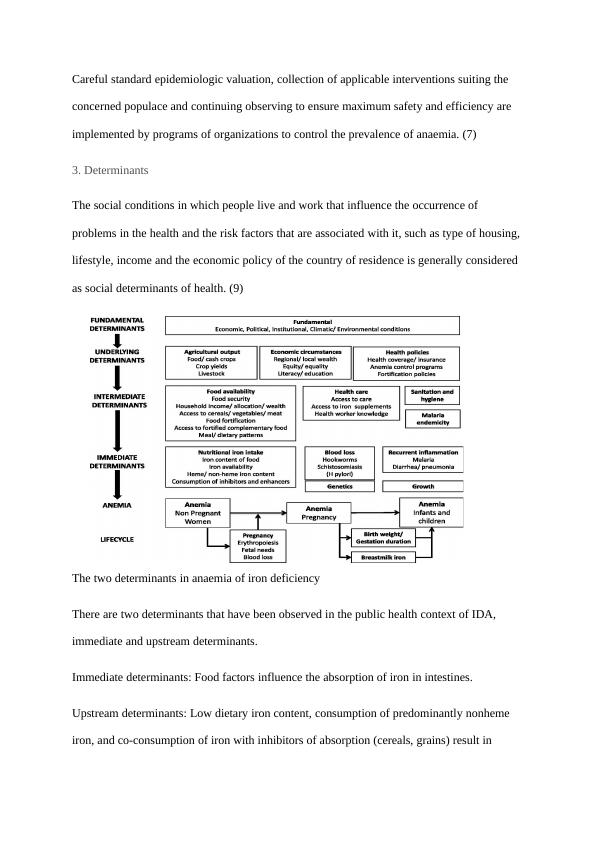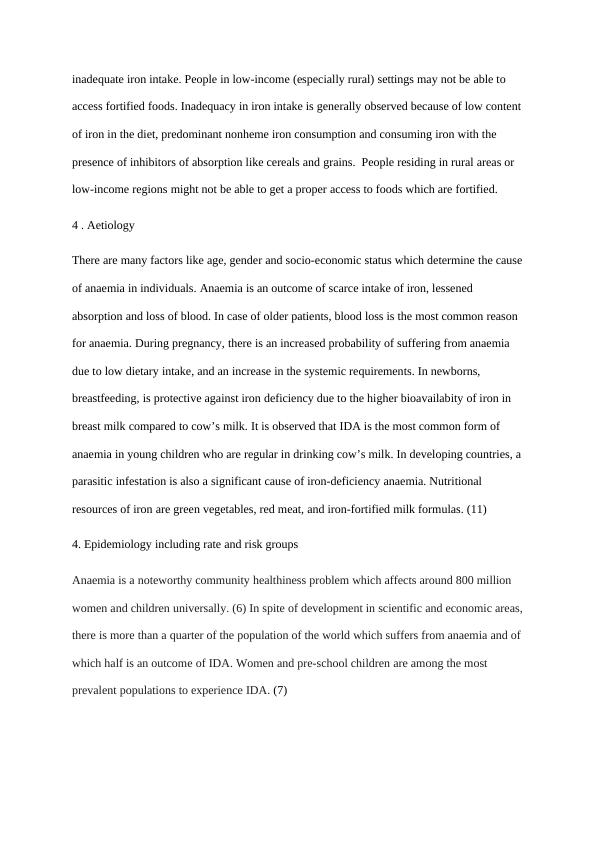Anaemia: Causes, Determinants, Epidemiology and National Strategies for Prevention
Analyzing the impact of anemia on global development and exploring the causes, diagnostic methods, and management strategies for iron deficiency anemia.
7 Pages1981 Words212 Views
Added on 2022-11-17
About This Document
Anaemia is a non-transmissible disease which is speedily expanding equally in developed as well as developing countries. It is one of the key challenges of well-being that is reducing the global development in the present century. This article discusses the determinants, aetiology, epidemiology and national strategies for prevention of anaemia in India and Bangladesh.
Anaemia: Causes, Determinants, Epidemiology and National Strategies for Prevention
Analyzing the impact of anemia on global development and exploring the causes, diagnostic methods, and management strategies for iron deficiency anemia.
Added on 2022-11-17
ShareRelated Documents
End of preview
Want to access all the pages? Upload your documents or become a member.
Intervention programmes for the prevention of iron deficiency problem in India
|8
|1671
|120
Clinical Scenario 3: Menorrhagia, Anemia, and Iron Deficiency Anemia
|5
|1003
|485
Human Nutrition - An Overview
|5
|980
|19
Current Perspective in Bioscience
|16
|4633
|69
Nutrition Education for Expectant Mothers
|1
|771
|216
Iron Deficiency Anemia
|4
|709
|279



